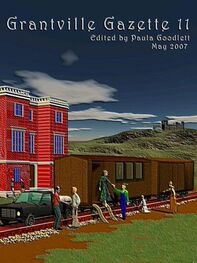Navigation is further complicated by the air you are flying through. Crosswinds, headwinds and clouds can all interfere with navigation. Many pilots have been blown far off course by a crosswind that they could not even feel while flying. Headwinds can slow an aircraft down so that while the pilot has a instrument stating one speed, in reality the aircraft is going much slower. All of these factors require that the pilot of an aircraft be very careful with his navigation, especially in the seventeenth century, because airports are few and far between.
Creating aerial maps will require that we have the ability to identify on the map exactly where all the transmission towers and radio stations are. This allows us to build a radio direction finder that will assist us in finding our position on the map. The pilot can use a radio direction finder that gives the compass heading to each of the radio stations we can hear.
Navigation is also possible by referencing your position to large known landmarks seen on the ground. Much like the bush-flying techniques now used in Alaska These are marked on your map. While navigating, several other things need to be taken into consideration. Among them is the fact that the air that you are in is normally moving and will push you around in the sky even though you think you're flying in a straight line. Allowance must be made for this either by continuous position checks or by calculating known wind drift as you fly and correcting for it.
Now for the tech stuff:
PAPI and VASI
The lamps themselves can be constructed with large grooved glass lenses which are tinted for color and placed in a sheet metal or a wooden case. Illumination for the lamps can be provided by arc lights, or limelight, or even an intense flame. Certainly standard high wattage electrical lamps could be used, however the construction of these lamps may be difficult for some time.
Light rails or flashers are a little more difficult because the poles and the lights will more likely require high wattage electrical lamps. However it is possible that limelights could be mounted in the place of electrical lights. It should be noted that limelight requires a supply of gas and oxidizer, even if it is only producer gas and compressed air.
Runway Lights
The lights along the side of the runway and those lights indicating the beginning and end of the runway will also need to be lit, at least at night. Again these lights can be created using grooved glass lenses and a lighting system. It should be noted that the lighting system can be done with arc lights if you have electricity or even gas heated limelights without electricity. Limelight's biggest problem may be the construction of the gas delivery system for each light.
Beacons
In the new timeline the electronics needed to produce these devices will be necessarily crude. In technical terms, transmission frequency will be produced using mechanical resonators and the modulation will need to be mechanically induced onto the carrier frequency. In other words, while it will be difficult, it is well within the tech level we are working with. It should also be noted that any large radio broadcast station tower can be used as a beacon as long as the exact location of the tower is known. This means that radio broadcast stations in cities will be usable as beacon towers.
Radio Direction Finder
Direction finding radios are basically a radio with the antenna that is formed in a loop. The direction finder is operated by rotating the loop antenna until you have a maximum and minimum amount of signal. The minimum amount of signal is when your antenna is aligned so that it has the minimum amount of surface in line with the radio broadcast source. The maximum amount of signal is when the loop is at the maximum amount of surface, or at right angles to the source.
Careful positioning of the dial can give you a direction in comparison to your flight path. This indicates the radio tower transmitter's location. Again it should be noted that with the strong beacons provided by resonators on the ground means a crystal radio circuit can be used in the radio direction finder on the aircraft.
Localizers and Glide Slopes
It will be necessary to use a resonator as a frequency creation device for the broadcast wave. Once the broadcast wave has been created, it will need to be sent to the antenna by shielded transmission lines. This can be done by using twin-element open-air lines that are enclosed within a metal shield. Think of two copper wires inside a large stove pipe, with the pipe thoroughly grounded. This system will get the power to the antenna without interfering with the antenna's broadcast capability, thus allowing the creation of a transmission that can be detected by the aircraft. Fortunately, we are not trying to broadcast very far, so we can use lower power in the transmission. The lower power simplifies many of the problems encountered when trying to transmit over longer distances.
ILS Detector in the Aircraft
The detector in the aircraft can be constructed using crystal radio techniques. The glide slope and the localizer both use different frequencies allowing each to be separately detected. The output of the crystal detectors can be connected to the coils that operates the needle in a dial. Normally the dial contains both needles with the localizer needle (left to right approach control) being vertical and the Glide Slope (up to down approach control) being horizontal. The dial arrangement allows the pilot to guide his aircraft down the proper angle by keeping its two needles crossed at right angles. Modern equivalents in our timeline work the same way but are made using modern semi-conductors. Substitutes for the new timeline will be bulkier and moderately heavier, but will work just fine.
In our time line these developments came over a period of fifty years. First with a smudge pot at the airstrip and a man with hand flags guiding the aircraft to the ground. Then the development of early PAPI and VASI, and then with the development of more complicated glide slope and localizer installations. Point-to-point navigation went through many incarnations, including celestial navigation much like was used by ships on the ocean. Then radio locator would guide aircraft to cities that had radio stations. Eventually beacons were developed that contain their own direction finders and with broadcast to the aircraft where they were and how far away they were.
So what does all this mean in Grantville? First, as air traffic increases there'll be a large increase in the amount of navigation equipment maintained so as to guide the flyers. As we already have airplanes in the air, we can assume that they have at least a smudge pot and windsock at the airport, allowing the pilot of the aircraft to find the airport.
The next improvement will probably be some form of air chart or map that will have major landmarks and directions for getting to desired destinations. These charts or maps will probably be in a continuous state of change, as good information is obtained. The more flying in an area, the more information will be collected for new charts.
Another early improvement will probably be radio direction finders mounted on the aircraft. As earlier stated, these radio direction finders will allow us to locate ourselves on our chart by finding the directions to known radio stations and using those directions to define a location for our aircraft on the chart. Pilots can be trained in this system in just a couple of days, so this will not change much of the current pilot training. Electronic glide slopes, localizers, and light rails will come as open grass fields give way to defined runways.
As destinations become identified in the USE, it will be essential that radio tower beacons are established at each destination. Especially in the beginning, these will likely take the form of large radio broadcast towers for the local radio broadcast station. But as navigation becomes more and more complicated, dedicated beacons may be established simply to provide waypoints for the pilots of the aircraft finding their way from one location to another. Eventually the beacons will be used to transmit valuable information to the pilot. Items such as weather conditions, wind speed and visibility alerts can all be transmitted over the beacon signal, and can provide valuable enhancement and additional safety for those who are flying in 1632 universe.
Читать дальше






